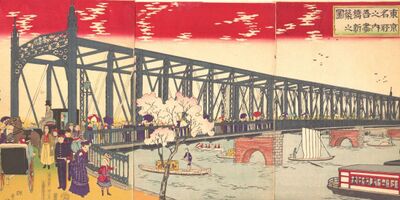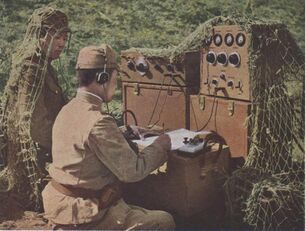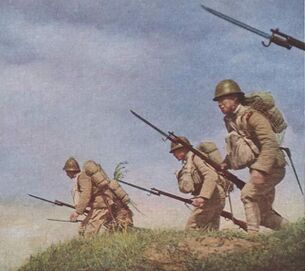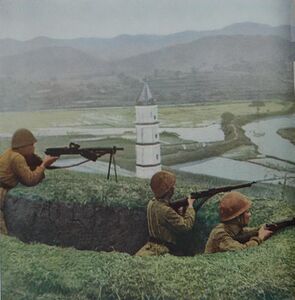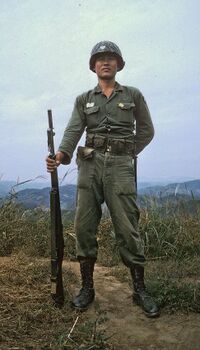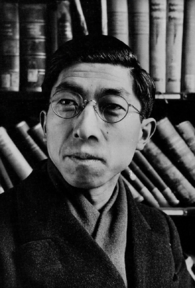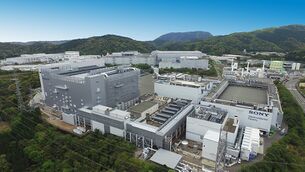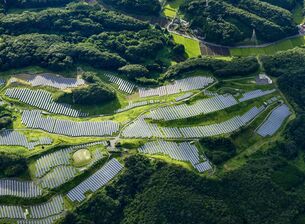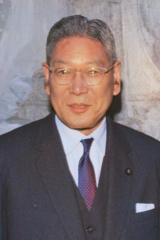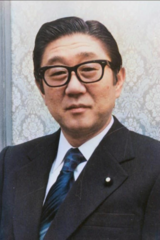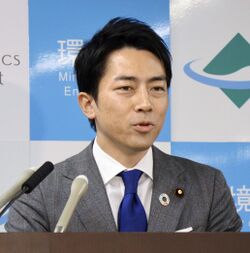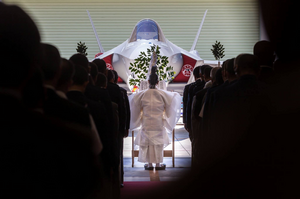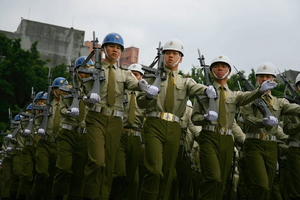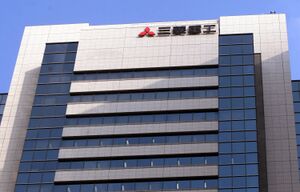User:Really/sandbox1
Collective People's Union Συλλογική Λαϊκή Ένωση (Syllogikí Laïkí Énosi) | |
|---|---|
|
Flag | |
| Motto: 一Όλοι οι Άνθρωποι Δεμένοι Μαζί! All people bound together! | |
| Anthem: Η Διεθνής (I Diethnís) The International | |
| Party Crest | |
| Syndicate Map of the Collective People's Union Syndicate Map of the Collective People's Union | |
| Capital and largest city | Obintum |
| Official languages | Énositypo (Union Standard) |
| Recognised national languages | Chóran Dyatóran Eschóran |
| Ethnic groups | Chóran, Dyatóran , Eschóran |
| Demonym(s) | Unionian (citizen) |
| Government | Council-based Syndicated Dominant Party State |
| Nikoloz "Niko" Rodoulis | |
| Stamatios Xenelis | |
| Legislature | General Congress of Ktonismos |
| Establishment | |
• Chóran Genesis | 1000 BCE |
• City States | 600 BCE |
• Oraclate | 300 BCE |
• Eruption at the Mount | 50 BCE |
• Age of Kingdoms | 100 CE |
• Chóran Empire | 1430 CE |
• Civil Strife | 1900 CE |
• Collective People's Union | 1919 CE |
| Population | |
• 2020 estimate | |
• 2022 census | |
| GDP (PPP) | 2022 estimate estimate |
• Per capita | 52,128 $ |
| GDP (nominal) | 2022 estimate estimate |
• Total | 10.5 Trillion $ |
| Gini (2022 estimate) | 0.378 low |
| HDI (2022 estimate) | 0.925 very high |
| Currency | Drachma (CPUD) |
| Date format | dd.mm.yyyy |
| Driving side | left |
| ISO 3166 code | CPU |
| Internet TLD | .cpu |
Chóra, officially the Collective People's Union (Énositypo: Συλλογική Λαϊκή Ένωση) is a transcontinental country situated at the juncture of South Eastern Maris and Western Agleia. It is divided mainly between the Chóran and Eschóran Peninsulas, and borders the Mesogeian Sea to the South and the Mavre Sea to the North. Obintum is the country's capital and second-largest city, while Gyálinos is the largest city and economic financial center.
One of the world's earliest permanently settled regions, present-day Chóra is home to many pre-historic cites such as Palió Vounó and was inhabited by ancient civilizations including the Chitites, Chatites, Eschóran Peoples, Oraclans, and others. Following the conquests of Máchi the Great most of the ancient Chóran and Eschóran regions were culturally Ailenized, and this continued through the Anthaos Era and the eventual rise of the Andronikos Dynasty. The Sali Liaks began migrating to the Eschóran Peninsula in the 11th century, ultimately seeing cultural integration into Chóran Religious Practices through the missionary Saint Savvina. Liak Selulate of Rye ruled Eschóra, and the Andronikos Empire ruled Chóra until the Great Eastern Invasion when both polities would disintegrate into dozens of Sali Liak and Chóran Principalities. Beginning in the late 13th century, the Mitridis Dynasty united the principalities and conquered the Dyatórans, while aileniziation of Eschóra further progressed during the Mitridis Period. Mitridis Expansion continued under Aimilios II, and during the reign of Erasmia the Spectacular, the Mitridis Empire became a global power
From the late 18th century onwards, the empire's power declined with a gradual loss of territories. Imperator Aimilios VII started a period of modernization in the early 19th century, leading the Mitridis Empire into the First World War as one of the Central Powers in 1893. During the war the Mitridis Government committed genociodes against the Nisiótes and Bayt Peoples. Despite initial nationalistic sentiment, no major war goals would be achieved and the tide of war would quickly turn against the Mitridis Government, with the last major portion of war support lost with the 1895 Ascension Crisis of Manos II. The Mitridis Empire sued for peace in desperate circumstances, with the majority of the nation's Agleian territory partitioned. The Assassination of Imperator Manos II and the Young Chóran Revolution of 1899 restricted the authority of the Imperator and restored the Chóran Parliament after a 15-year suspension, ushering the empire into a brief multi-party period. The Three Triumvirs took control with the 1905 coup d'état, acting as the Regency Council of the young Imperator Kalliopi III. The Triumvirate would collapse after the death of Triumvir Omiros Koskiades under mysterious circumstances in 1909, leading to a brief civil war with Imperial-Claimant Manolidell I opposing the reign of Kalliopi III. The war would end with Manolidell's defeat, resulting in a brief centralization of power under Triumvir, now Dictator-perpetuo Tomas Ioannakis. This would quickly lead to the rise of the Decembrist League, who allied with the Young Chórans would lead the 2nd Young Chóran Revolution in 1917, originally set out to achieve the same goals of re-democratization and the enacting of Imperial-Claimant Manolidell's liberal ideas, would quickly be overtaken by anti-monarchist sentiments, leading to a overthrow and assassination of Tomas Ioannakis and Kalliopi III. A Brief Chóran-Eschóran People's Republic would see formal dissolution of the Mitridis Empire, despite continued resistance of the White Chóran Movement. Ktonas Demetriou, leader of the Ypérochist faction in the Decembrist League would had acted as the de-facto military leader of the People's Republic would oust opposition in a coup d'état eventually taking control and declaring the "Collective People's Union" in 1919.
Chóra is a regional power with a geopolitically significant strategic location
Etymology
The name "Ilbon" comes from the combination of two ancient Ilbonese words: "Il" meaning storm, and "Bon" meaning land. Ilbon, due to its geographic positioning, has historically been battered by all kinds of storms, whether they be typhoons or snowstorms. The sheer amount of stormy weather experienced by Ilbon throughout its history has had a profound effect on how the nation's people viewed weather and the seas before the development of proper meteorological methods, leading to the superstitious level of fear and admiration that some parts of Ilbonese society have towards the weather.
History
Ilbo-Genesis
The first humans to arrive in Ilbon did so around 10,000 years ago when they migrated from Sorenwey to Ilbon on small wooden vessels in waves and established a primitive hunter-gatherer, pit-dwelling culture on the island. The first wave of arrivals, which later went on to form the Kita-Tomin culture, was eventually pushed out by the second wave which was that of the ancestors of modern middle Ilbonese "Ruuzoji" people, who were later pushed out by the ancestors of the Kokuri who arrived with the third wave of settlers. Based on cave paintings and primitive inscriptions found in the mountainous regions of western Ilbon, it is assumed that early Ilbonese settlers from all 3 cultures drifted towards figures of authority and based their tribal structure around obeying these figures of authority. Early Ilbonites have been, due to the lack of found damage on ancient skeletons, theorized to have been pacifistic by nature, only resorting to combat when all other options were exhausted by their surroundings.
First Kingdoms
Ilbon's first unified kingdom came about during the 4th century BCE and was led by King Tsuchiya Mayumi and his council of warriors. Before he consolidated power in the lands of middle Ilbon, King Mayumi led a smaller tribe of warrior-gatherers named the "Omuras" or "growers", who slowly absorbed their neighboring tribes via peaceful annexation over the span of two decades to eventually form the first Ruuzoji Kingdom; every legitimate and illegitimate emperor after Mayumi's death would claim to be descended from the Tsuchiya and Omura clans. After King Mayumi consolidated control in the 4th century BCE, he declared himself to be the King of the Ruuzoji and took it upon himself to begin expanding the kingdom's military and scientific skill, reaching out to prominent intellectuals from across his Kingdom such as the mountain-dwelling Sugihara Moriko and his group of apprentices, and personally training soldiers to bolster the military's strength. Mayumi, during his reign as king, was rumored to have been a homosexual because of his inability to produce a male heir, but eventually married one of his female concubines and produced a male heir the year after. King Mayumi is viewed as an almost divine figure to followers of the Imperial family, and his founding of the Ruuzoji Kingdom has become an almost mythical event in Ilbonese history.
Mayumi reigned as king until the age of 50 and left his kingdom to his younger son, Tsuchiya Tsutsomu. Tsutsomu, led by his father's council of warriors, ruled much in the same way as his father did but made many more attempts at encroaching upon the territories of the Kita-Tomin and Kokkuri. At the age of 31, Tsutsomu was shot in the shoulder by an arrow from a Kokkuri assassin, which prompted a retaliatory strike from the Ruuzoji army, leading to the beginning of the first Ruuzoji-Kokuri war. The Kokkuri, although largely outnumbered by the Ruuzoji, were noted to have fought with "stunning tenacity", and many captured Kokkuri warriors were even sent back home to the houses of Ruuzoji noble families to serve as bodyguards and mercenaries. After 8 months of inconsistent fighting, King Tsutsomu of the Ruuzoji people and King Beon of Kokkuri met atop hill Haneul in what is now the region of Izumi to negotiate an end to the war. The terms agreed upon were deemed to be fair to both sides, and the two kings left satisfied by the negotiation, but not before reportedly bowing to each other in a show of "ancestral respect". Haneul hill was declared an ancestral site by the Ilbonese government in 1977 for demonstrating the connection shared by the Kokkuri and Ruuzoji peoples.
Ruuzoji Civil War
Centuries of Strife
Auspicious Revolution
In 1825, the Ruuzoji domain's rapidly deteriorating stability became apparent to Ruuzoji’s across its lands. Secret societies were formed, cliques in the military began to scheme, and many many other sects of Ruuzoji society saw an opportunity to put their beliefs and ideologies into power. Armed men stormed public offices, police stations, and even the imperial court; the army mobilized and marched straight towards the imperial capital in Iwigi, storming it and capturing the emperor. Although the emperor was far from a beloved public figure, the revolutionaries deemed that it was far too great a risk to execute him, instead preferring to strip him and his family of their titles and integrate them into civilian society. The Domain's new government was extremely chaotic due to the continued presence of the military, as well as other revolutionary groups in the still recovering Domain. Once the dust settled, the republican Revolutionaries of Oikage triumphed and became the founders of the new “Ruuzoji Federal Republic”, a Federal Democratic Republic.
Reform after reform was passed by the new republic as it went about tearing down the old and archaic structures of the previous imperial dynasty: suffrage was granted to all male Ruuzoji and high-class women, and a legislative assembly modeled off the Imperial Court of Emperor Okabe was created. At this point, gunpowder weaponry and technologies of the industrial era had already been in use by the Ruuzoji, Kokuri, and Kita-Tomins, but the Ruuzoji were considered the first of the three sister-peoples to have put large parts of the newly created Republic's budget was put towards funding the continued research of modern technologies to put into use in fully industrializing Ruuzoji and bringing up to pace with the rest of the world. Land reform was inacted and excess land was taken away from the large feudal lords and distributed back to smaller peasants and landholders to encourage efficiant usage of land during the nations state-enforced industrialization. Governmental roles were handed out based on merit instead of social standing like how they had been during the imperial era. Although the government was officially a republic, the president officially didn’t have term limits and could serve for as long as he wished; this issue was debated constantly by the members of the Ruuzoji diet but was never truly solved, only being remedied by unpopular bills and acts. The lack of term limits led to the first president simply refusing to resign and to accept the diet's ultimatums in 1832, resulting in the degradation of Ruuzoji democracy and the formation of an oligarchy in the place of what was supposed to be a free, representative democracy. This same oligarchical class would hold power in Ilbon until the Red Admiral's Coup in 1901.
Machinist Era
With the Oligarchy's grip over Ruuzoji politics secured, their chosen president, Tsutsui Yuu, working off orders given to him by members of the Council of Military Affairs, began preparing the Ruuzoji Federal Republic for its first military actions since the days of Empress Hitomi and the Lotus Sun Society. The Ruuzoji Republican Army grew from 150,000 troops equipped with decades-old muskets in 1835 to a force of 450,000 troops equipped with modern rifles and cannons in 1851. Accompanying the Ruuzoji military's quickened growth was an increase in the size of Ruuzoji cities, as trends similar to the industrialized societies of Maris were beginning to be observed in Ruuzoji cities: farmers, fishermen, and other "pre-Republican" professions were being slowly phased out in favor of city-dwelling, factory-based work, and wage labor. Most impressive to foreign observers and the statesmen of the Republic was the rapid growth of the city of Oikage, where the capitol was soon moved to after the old capitol, Iwiki, was deemed unfit to be the center of government. The first School of Economics in Oikage to study and map the pace of Ruuzoji's economic growth, and it was found that the economic health of the country had greatly increased since the days of the last Ruuzoji emperor. Following the establishment of the first School of Economics, the National Planning Bureau was established to help coordinate with Ruuzoji industrialists but didn't receive enough attention from the leading Oligarchs to begin its operations. While Ruuzoji industrialization was still in its early stages, cliques of businessmen began to take advantage of the profitability of Ruuzoji industrialization, and formed the first Ruuzoji corporations; the small ore refinement company "Kaga Hagane"(literally, Kaga Steel), being a prime example of a small business that took advantage of the Ruuzoji industrialization. Many other companies and corporations would form out of the implementation of free-market policies in the Republic, but only some would survive the wave of nationalizations that followed the Red Admiral's Coup in 1901.
Industrialization, despite the positive effect it had on the strength of the Ruuzoji Republic and its military, hurt the livelihood of Ruuzoji citizens, especially those who lived in the newly industrialized cities. Dwellings were typically small and could only fit 2-3 people, and those who couldn't afford dwellings were forced to sleep in small community sleeping lodges which cost them a small amount of money on an hourly basis. Large smokestacks from nearby factories spewed thick clouds of smoke which blanketed the sky for miles; some clouds of smoke traveled nearly 50 kilometers before finally dissipating. The factories themselves were worked and manned by poorly paid migrants from the rural prefectures of the republic and were considered places of "utmost indignity" by farmers. Conditions in the factories were considered appalling to most and began to be slowly improved by the cabinet of President Fukunaga after the enactment of the National Labor Standards and Fair Treatment Edict in 1873. The sprawl and filth of the cities were contrasted by the wealth and splendor of the Neo-Urban city outskirts, where the wealthy members of Ruuzoji society hosted lavish parties and balls for themselves and their neighbors.
In the year 1855, the Republic was deemed "sufficiently industrialized" by then President Iwai and began making aggressive moves towards its neighbors in the north, the Kita-Tomins. The Kita had industrialized at a slower pace than the Ruuzoji and were picked as the first target for the Republic's expansion, which resulted in a border skirmish at the eastern end of the Kita-Ruuzoji border. On May 15th, 1856, Ruuzoji skirmishers began an assault on the small Kita outpost, "Castle Abai", seeking to lure out the fort's small 5,000-strong army of defenders out from their advantageous position. The Kita never left the fort and were instead assaulted by a larger Ruuzoji force numbering 9,000. The siege of Castle Abai lasted only 3 days and was the first battle of the coming Kita-Ruuzoji War. The war lasted only a few months and the Kita were forcefully annexed into the Ruuzoji Republic, forming the Kita-Ruuzo Federal Republic. In the coming years, the KRFR began preparing for the unavoidable war with the Kokuri Beon Kingdom and began by expanding its policies of mass industrialization and modernization to the conquered Kita lands.
With the coming of the 1870s, the KRFR was ready for an invasion of the Beon Kingdom but needed a justification to do so, especially considering that the Kingdom was supported by Essone. That excuse came when on October 25th, 1872, an explosion in Oikage harbor was blamed on the presence of a Kokuri merchant ship in the harbor, giving the Ruuzoji an excuse to launch a full-scale invasion of the Beon Kingdom. The ensuing war would be the first and last major land war to happen on the Isle of Ilbon. It was also the first time in Ilbons history that two fully-industrialized armies clashed with the support of modern weapons and mass production. The last Kokuri-Ruuzoji war lasted 8 years and claimed the lives of nearly 900,000 people in total, and resulted in the annexation of the Beon Kingdom into the Ruuzoji Republic, making it the first time in Ilbons history where a single nation managed to unite the entire island. Essone, having lost their only ally on the Isle of Ilbon, launched an invasion of the newly unified Republic from the northern tip of the isle, but were pushed back into the sea after Ilbonese troops launched a harsh counter-attack; Ilbon's victory in the war against Essone is still a point of national pride in the modern day.
Revolution and Red Ilbon
The 1880s for the newly unified Ilbonese Federal Republic are remembered as times of great trouble for the island, as the prosperity seen during the previous decades of conquest and industrialization began to subside. Corporate dominance in the economy was nearly unmatched, workers across the nation, despite having seen a general rise in living standards, still worked long hours in factories for meager pay, and the Oligarch's grip on Ilbonese politics was still uncontested. The war with Essone had created tensions between Ilbon and Maris, making trade difficult to establish, and affecting the well-being of the Ilbonese economy. Left-wing political movements became popular in the cities and began to be noticed by urban industrialists who asked the military to hunt down socialist, anarchist, and communist figures; this culminated in the start of the first Ilbonese Red Scare. Political instability caused by mass repression, combined with economic downturn, led to the collapse of the long-standing Oligarchy in 1901 at the hands of Admiral Orio Bunko and his socialist officers.
During the early 1900s, the newly proclaimed Socialist Peoples Republic of Ilbon, fought with both reactionaries that took advantage of the instability following the Red Admiral's Coup, and remnants of the old Oligarchical Republic that had existed prior to the coup. Along with this, separatists from the Kita and Kokkuri regions began revolting against the Ruuzoji to establish their own independent states. The Red Admirals went into negotiations with socialists in the two aforementioned regions and created a pact of mutual cooperation; this pact is considered one of the first examples of a "Pan-Ilbonese identity" being created on the island. Republican as well as reactionary revolts were put down in a period of Red Terror called "Crimson Autumn". A full-blown civil war was prevented after the assassination of Okabe Yuki, a prominent leader in the reactionary resistance, and the exile of the last remaining Oligarchs from the times of the Republic. Power still rested in the hands of the military, but powers were slowly being returned to the people, and the military began loosening its grip over Ilbon as well as putting an end to the Red Terror.
Admiral Bunko stepped down in 1905 to allow a civilian government to form in his place, giving rise to the Zen Irubon Jinmin Tō, or "All-Ilbonese Peoples Party". The AIPP, under the leadership of the retired mixed Ruuzoji-Kokkuri general, Seo Yuu, became Ilbon's leading political party. Premier Yuu, prior to the founding of the SPRI, was an outspoken nationalist, as well as a labor organizer and member of the military, earning him respect from both left-wing and right-wing groups. The AIPP's official ideology was "National-Vanguardism", a unique mixture of revolutionary Socialism, Pan-Ilbonese nationalism, and radical modernism. A wave of nationalizations occurred, and businesses were either completely integrated into the state economy or turned into "state-owned enterprises" for the government to use in its future economic plans. Alongside this, old traditions that were deemed too conservative by the standards of the new government were abolished or reframed to fit the SPRI's egalitarian agenda. The National Vanguardists sponsored artists, poets, and philosophers much in the same way that Emperor Okabe had in the 14th century, but this time with the explicit purpose of promoting a modern Pan-Ilbonese identity. Admiral Bunko's military philosophies became the official national school of thought for reforming and strengthening the military. The Ilbonese army began producing its own tanks and airplanes, enforcing strict discipline, creating a meritocratic structure of organization, rooting out corruption in its ranks, and developing strategies to fight future wars.
During the 1920's the old imperial family, which had now just become another collection of nobles, was invited to join the socialist government, upsetting anarchist parties and organizations in Ilbon. The nobles declined the offer, and in January 1924, the Socialists acted against the old imperial family and attempted to capture them all in one fell swoop, but were stopped by the "Imperial Restoration Association", a small army of rebel military officers and soldiers who wanted to preserve imperial traditions in Ilbon. Most of the IRA's leaders were raised in destitute areas of the Ilbonese countryside and were utterly disgusted by the unmatched wealth and power that the affluent elites of the country had in its political scene; the "Ode to Anger" was written by soldiers of the Imperial Restoration Association during this time. The IRA, having shown up with ten tanks and nearly 5,000 men, blocked the Ilbonese National Army from entering the Imperial Palace, and negotiated with the Socialist government for the peaceful exile of the Imperial family. For 6 days, the IRA escorted the Imperial family through the plains of northern Ilbon until they were eventually able to board a boat from Ilbon to Eushima, then from Eushima to Nuwea; they would not return until the reformation of the Ilbonese Kingdom in 1940. The removal of the Ruuzoji royal family was seen as a triumph of Socialist ideology and was also exclaimed to be a victory of the workers over the "hereditary reactionaries of old".
On September 1st, 1930, Seo Yuu passed away from a sudden heart attack, and his sucessor, Nagano Toru, was appointed the new prime minister. Prior to his ascension, Nagano Toru was already a controversial figure in the inter-party politics of the AIPP for his rabidly nationalistic stances and pushes to wage a "peoples war" against neighboring states, especially Elesthra and Artadesia. On top of this, he was known for making chauvanistic jabs at his Kokuri and Kita party members. Nagano's first actions as premier were to begin militarizing the state, as well as inviting back nationalists who had been expelled from Ilbon during the Crimson Autumn. Businesses once nationalized were given more autonomy and turned into "Peoples Conglomerates"; these Conglomerates went on to become the "Big Nine", the group of state-run administered corporations that dominates half of the modern Ilbonese economy. His actions caused alarm across eastern Agleia, and eventually led Ilbon to fight in the Second Great Cellian War. Discontent began brewing in the largely reformist military and lasted until the end of the war, in the end it resulted in the collapse of the SPRI.
Second Great War and the Deluge
During the Second Great War, Ilbon fought aggressive wars across the regions that now encompass Elesthra and Artadesia. Ilbon itself had tenuous relations with other Socialist powers and more or less fought to achieve what it saw as the liberation of Agleia and Sorenway. Before the onset of the war, Ilbon had spent many decades building a large modern fleet to project its power abroad, this same fleet, much like the army, saw combat in the seas and oceans surrounding the island. The IAPP's new premier further secured his dictatorial grip over the nation as the war progressed, side-lining many of the internal factions that he had worked with some years ago to achieve power. The new premier, along with a clade of corporate technocrats, sought to increase production through optimization of workflows and generally making the Ilbonese industry more efficient, their model was used in Ilbon's captured territories to fully extract their worth during the war. Ilbon managed to hold onto its lands throughout the war and even expanded into some nations further than Elesthra, but their gains couldn't be held forever, because, in 1939, the Great Deluge occurred, resulting in global white peace and an end to the war in its totality.
As the Second Great War came to a close, Ilbon was in ruins. Some years before, massive waves from the eastern ocean had washed over Ilbon's eastern coast, wiping out the Grand Eastern Navy and putting the Socialist government on edge. Cities were in ruins, refugees were fleeing further and further inland, and political tensions long thought extinguished, returned and began putting more strain on the state. Revolts broke out in cities all over Ilbon, workers were denied their paychecks and bread, and similar revolts broke out in the countryside. Activists and revolutionaries attacked provincial capitals and broke into armories to arm themselves in preparation for their upcoming struggle with the central government. The army was recalled from its deployments around the world to put down the revolts. In the days, weeks, and months following its redeployment to the Ilbonese mainland, the Ilbonese Peoples Army and its associated paramilitaries killed nearly 90,000 insurrectionists, bringing state control over regions that were declared to be in "full anarchy" some months before. It was found that the majority of these insurrections were comprised of anarchists and "anti-statists", this fact would linger over Ilbon for the rest of its history. Even though the revolts may have been put down, the government's ongoing instability was an unavoidable issue, and so the long-reigning Socialist government was replaced by a clique of Junior reformist officers; ending 4 decades of Socialist rule on the island.
Reconstruction and Cesylle
The first major decision that the Officers Junta made after assuming power was to invite the royal family back to Ilbon, whose very existence they deemed vital to the revival of Ilbon's soul. Nishioka Taro, the legitimate successor to the Ruuzoji throne, was brought back to Ilbon from Nuwea with the remaining soldiers of the Imperial Restoration Association and crowned monarch of the Kingdom of Ilbon. After the monarchies returned, the established Military Reconstruction Government began mopping up remaining insurrectionists from the 1939 revolt, along with generally preparing Ilbon for the onset of democratic rule. The Junta established the "three purposes of the nation": establishing and maintaining the well-being of the people, ensuring the right for the people to determine their future through fair electoral practices, and the ensuring the continued existence of the Ilbonese race; the Three Purposes were adopted into Ilbons 1941 constitution. Ilbon's new constitution was finally penned and officialized on September 1st, 1942, which to led the end of the Officers Junta and the start of Goda Osamu's term as prime minister.
Osamu's first move was to invite a broad spectrum of Ilbonese parties into his Grace Front, this ranged from far-right groups to pseudo-socialist organizations and everyone in between. He sought to, in his own words, create a "Pan-Ilbonese" coalition that transcended ethnicity, culture, and politics. Osamu also coined the phrase "All peoples under one banner", which became the Kingdom's motto. With the support of most legal Ilbonese organizations at his back, Osamu began implementing his 5-point plan towards Ilbon's reconstruction that began with the material reconstruction of the country. Old technocrats from the Socialist government were rehabilitated and brought back into the government to help organize the reconstruction of Ilbon's economy. First was the re-establishment of different societal institutions, such as education, healthcare, and welfare for the poverty-stricken rural areas of Ilbon along with refugees who had fled further inland during the destruction of Ilbon's eastern cities. Rural schools in Ilbon had been historically destitute but were brought up to speed with the educational standards of the world by 1948. Ilbon's first state welfare program began to distribute monthly payments to eligible citizens. Initiatives to completely modernize Ilbons farms began afterward to make up for the revenue that the Ilbonese government had lost during the Deluge; rural modernization was declared completed in 1949. The issues of economic direction, housing, and diplomacy weren't initially prioritized but eventually began to be worked on in 1946 as Osamu implemented reforms addressing the afroementioned issues. Cities on the countries' mostly devastated eastern coast, such as Oikage, were rebuilt but still struggled to return to their former opulence until the latter half of the 20th century. To encourage further growth, Ilbon incentivized immigration through the guarantee of financial stimulus for those coming to the island. Osamu had not fully rebuilt Ilbon but is still considered to be the figure that led Ilbon through reconstruction.
5 years after the deluge, Ilbon once again found itself at war, this time against the Aldlockean Federation, which had started an international crisis by invading its neighbors. Goda Osamu saw a chance to establish friendly diplomatic ties with the nations of Cesylle by providing aid and began preparing troops, supplies, and advisors to be sent overseas to fight the Aldlockean Federation. 200,000 Ilbonese soldiers - some of whom were veterans from the Second Great War and others who were newly trained draftees - were sent east alongside the 2nd Naval Group, which had been stationed on the western coast of Ilbon, protecting it from the Deluge. Enthusiasm over the nation's supposed redemption in the war espoused by Ra Jiwoo soon died down as the Ilbonese volunteers were faced with the realities of war in Cesylle. In combat, Ilbonese troops went toe-to-toe with Cesyllen infantrymen and tanks, the latter of which were often left unopposed on the battlefield until heavier vehicles were deployed to the battlefield to engage them. Ra Jiwoo, after speaking to General Secretary Jad Madsen of Druermarsk, changed his strategies in the war and began fighting the Ceysellen forces with more ruthless tactics. Napalm saw use and trench warfare returned in some areas of the front. After a year of fighting, nearly 50,000 Ilbonese soldiers had died on Cesylle and the rest returned home. Many were deeply scarred by the experiences they had in Aldlocke; the term "壊れた" (Kowareta or "Broken") has been used to describe this generation of soldiers. Stories, novels, manuscripts, and autobiographies written and shared by the veterans of the war in Aldlocke would soon proliferate across the Kingdom in the coming years and eventually helped to form the basis for Ilbonese foreign policy in the coming decades.
Return to the World Stage
Years of the Carp
Faltering support for the Ilbon Liberal Bloc prior to the 1972 general election gave oppositional parties in the Kokkai a chance to usurp the majority the ILB had held for the past 9 years. Out of this opportunity came politicans like Amano Katsuro, a "Forwards, Fatherland" politican from the city of Minna. Forwards Fatherland up until the year 1972 was a minor party in the Kokkai and did not hold much influence outside of the Inkseong region and the city of Minna, but did see some growth following the unsuccessful economic reforms and ensuing impeachment of prime minister Ose Hachiro. Katsuro railed against the former prime minister in his speeches and promised a new future for all those who felt that their trust had been abused by Hachiro and his cabinet. On top of this, Amano Katsuro promised to fix Ilbons economic problems and further integrate it into the global community. Most Ilbonese political scientists agree that Amano Katsuro believed in no official ideology and chose to keep his beliefs vague to appeal to as many people as possible, but Katsuro's proclivities towards authoritarianism, centralism, and left-wing reformism are not questioned. Katsuro's supporter base, prior to his 1972 election campaign, consisted mostly of workers and farmers from Minna and its surrounding towns, but after Katsuro announced his bid for Prime Minister in 1971, a wider range of people put their support behind his campaign. Kokkuri and Kita representation groups also put their support behind Katsuro. On July 18th, 1972, Amano Katsuro was declared the winner of the 1972 Ilbonese General Election and inagurated as Prime Minister two weeks after.
After securing a comfortable majority in the Kokkai following Forward Fatherland's victory in the 1972 General Election, Katsuro's administration went about fixing many of the problems that the previous Prime Minister hadn't been able to solve. Among these national issues, the Prime Minister promised the abolishment of "Want… Disease, Ignorance, Squalor and Idleness". Katsuro appointed Eguichi Kazuhiro, an infamous economist from Oikage, and Matsuzaki Toshiaki, an up and coming diplomat, to key positions in his government and planned to work closely with them to strategize and implement his reforms. Among the first reforms passed was the Ilbon Basic Needs Act in 1973. This, now widely agreed to be the basis for Ilbon's modern welfare state, created a series of programs that provided additional income to low-income families and gave them tax-cuts to help maintain financial stability. Food and clean water were also declared as "basic needs" by the 1973 act, prompting the central government to subsidize farms across Ilbon in exchange for lowered food prices. Access to clean water and proper plumbing was expanded across the nation and in 1992, near the end of Katsuro's 3rd term as Prime Minister, the homes in Ilbon who had unimpeded access to clean water and were connected to the national sewage system went from 64% to 98%. Education in Ilbon at the time was only free until the end of Secondary school, after which someone wishing to attend a tertiary school was expected to pay, creating a shortage of college educated people. Using the advice of Kazuhiro, Katsuro pushed the State Education Amendment through the Kokkai in 1975, which made all education in Ilbon free, from primary school to tertiary school. Instead of recieving funding from private institutions, Ilbonese universities would be funded directly by the central government in exchange for letting all students attend at minimal cost. Not long after, the National Healthcare Plan was introduced, creating the foundations for Ilbons modern healthcare system. Billions were funneled into the healthcare plan, by the end of the 1980s, Ilbon's healthcare system was up to modern standards. Katsuro's public approval soared from 46% in 1974 to 71% in 1976, allowing Forwards Fatherland to win the 1976 General Election in a landslide.
Katsuro's next 4 years in office were dedicated to solving the economic woes felt by Ilbon. Ilbonese industry had been neglected for at least a decade, previous Prime Ministers put more faith into the nation's growing electronics market than in the large industrial capacity that Ilbon was known for in the past, making much of what was once productive industry become outdated or even abandoned. In addition to this, trade ties with the rest of the world were strained and Ilbons markets were slowly becoming reliant on just electronics, which was slowly losing its profitability in the mid 1970's. Minister of Economic and Fiscal Health, Eguchi Kazuhiro, proposed Ilbon's first 10-year plan, alongside a piece of legislation named the "Ilbon Industrial Development Ordinance". The goal of the 10-year plan was to revitalize Ilbon's deteriorating industry as well as begin producing items other than just electronics. The IIDO bound the large corporations that dominated parts of the Ilbonese market to the state and also opened up the nation's markets by replacing Ilbon's ideologically motivated foreign policy with something more pragmatic and business-friendly. This deviation from the anti-communist line set up by Prime Minister Minoru a decade earlier upset members of the Kokkai, but Katsuro used his powers as Ilbons executive to pass the IIDO through both the Kokkai and Ilbon's higher courts in a move that is considered one of his first moves towards an increasingly authoritarian domestic policy. Matsuzaki Toshiaki was sent abroad in what is called the "100 days to brotherhood" mission, a period of around three months where the Minister of Foreign Relations was sent to dozens of countries in one single trip with the express purpose of improving Ilbons relationship with the rest of the world, this included the member states of the ASL; this was the first time that an Ilbonese diplomat had stepped foot in Druermark. In the first four years of the ten-year plan, Ilbon's industry was nearly fully modernized and the economy diversified greatly. It began producing not only quality electronics, but producing luxury and civilian cars, household appliances, telecommunications equipment, cell phones, and military equipment among other things. In 1979, close to the end of Amano Katsuro's second term, Ilbon shifted from a balanced economy to a primarily export-focused economy, using both foreign and national resources to create goods and ship them to the rest of the world.
This period of rapid economic growth, as well as radical refurbishment of Ilbonese society, became known in post-Katsuro Ilbon as the "Years of the Carp", being named such because of the special meaning Carps have in Ilbonese culture. In 1983, two more figures would arrive in the Ilbonese political scene, them being Bok Hyun and Oto Hikasa, two corporate executives from an upcoming electronics corporation. After observing the effects of their corporate labor standards in one of their factories, the duo concluded that higher wages, along with a more human work environment fostered greater productivity among their workers, and came to Katsuro's headquarters in Minna to present their idea to the Prime Minister. Katsuro was impressed, and began drafting a revision of Ilbon's labor laws, but was stopped by the Big Nine. The Prime Minister met with the Executives of the nine corporations in Oikage and came to an agreement where the corporates would retain some autonomy in the new state-guided corporate system that he was building, in exchange for the implementation of the Hyun-Hikasa Labor Revision Ordinance; this meeting between Katsuro and the Big Nine is where his nickname of the "Tiger of Oikage" was earned, due to his energetic style of negotiation. The last of Katsuro's radical reforms was passed on June 8th, 1987, in the form of the Open Ilbon Ordinance, which made immigration to Ilbon much easier, and provided incentives for people to do so, especially those of an educated background, although there were provisions in place to encourage undereducated foreigners to permanently stay in Ilbon as well. With Ilbon being in a much better state than it was at the beginning of his 5 terms, Katsuro retired from office on July 19, 1992, the same day he was inaugurated 2 decades prior. Katsuro is remembered as the "Father of Modern Ilbon", for having such a decisive role in crafting the nation's modern economy as well as its political system.
Post-Katsuro and the Modern Day
In January, 1994, a series of student protests began in the northern city of Koai, with the total number of active protestors being in the thousands. Police were deployed but failed to quell the protests, which soon turned into full-blown riots, leading to further militarization of police and greater radicalization among protestors. Military police were called in to crush the riots but found that the rioters had turned the streets of Koai into makeshift fortresses and were employing guerilla tactics to fight back against the police. Tanks were deployed to clear the streets, resulting in the end of the riots. 106 rioters had been injured while 6 had been killed, and the police of Koai had lost 3 officers to the mobs.
In March, 1996, Watani Castle came under assault from a group of anarchist militants. Watani Castle, located in the inland city of Mifu was, at that time, occupied by the Shinju branch of the royal family and administered by the widely beloved Prince Yuka. The militants assaulted the castle in the dead of night, dispatched the castle guards, broke into Prince Yuka's palace, and kidnapped him along with his entire family. The ensuing days were filled with anxiety as security forces attempted to negotiate for the safe release of the Shinju family. Ilbonese television broadcasted the crisis, and all of Ilbon and the world saw what was unfolding. The militants had a list of demands, at the top of the list was their safe extradition out of Ilbon. One by one they surrendered the members of the Shinju family, but they refused to let go of Prince Yuka's grandchildren, who were planned to be taken with the militants in their plan to flee Ilbon. Security forces fought to remove the remaining militants by force and began a siege of Watani Castle, but were forced to stop when the militants threatened to kill the remaining hostages. After almost a week of negotiations, the Militants killed the two remaining hostages before committing suicide. The deaths of the two Shinju heirs shocked Ilbon, the shock was felt worldwide; foreign governments gave their condolences to the Shinju family. During the nationwide unrest that followed the tragedy at Watani Castle, a contingent of the Kokkai's members who followed Republican beliefs went into action and forced a revision of the constitution through the Kokkai, which would not only abolish the monarchy but give the provisions necessary to put down the riots. The revisions made it so that the royal family kept their titles but were no longer able to hold any positions of power on a government level, it also empowered the Kokkai as well as the National Police Force. King Taro was sent a draft of the revised constitution and accepted the changes, proclaiming that "he would do whatever the people asked of him, even if it meant stepping down as sovereign of the nation." The Republic of Ilbon was proclaimed three days after in front of the Kokkai, and a broad crackdown on rioters began; within weeks, order was restored.
Since the turn of the century, Ilbon has changed dramatically from a Parliamentary Monarchy to a Semi-Presidential Republic. The office of Prime Minister and Deputy Prime Minister were abolished in 1996, making way for the offices of the President and Vice President. Many of the assorted laws and policies, excluding those on the privileges of royal family, were kept in place or improved upon since the year 2000. During the 2004 election, a single party, the (BLANK), was able to gain a large majority in the Kokkai as well as its legislative and judicial counterparts, giving them a firm grip over the Ilbonese government. Ilbon is now a de-facto one-party state due to the dominance of the (BLANK). The majority the (BLANK) holds in government has been contested since the 2004 election, and continues to be one of the most controversial political topics discussed in Ilbon. A younger generation of Ilbonese, most of whom were either born during the proclamation of the Republic or during the rise of the (BLANK), are now entering politics and pushing for even more democratic reforms, which in turn receives pushback from Conservatives in the Kokkai. The (BLANK) has pushed further economic centralization, a "Social Bureaucratic" model of management, integrating technology into state governance, forging a "cutting-edge" ideology for the 21st century, alongside an effort to reform its party structure and reducing corruption all the while promoting meritocratic civilian participation in the government. Ilbon has also begun deepening cooperation with the Defense Treaty of Independent Nations and focusing heavily on its space program.
Politics
Governance
Administrative divisions
Largest cities
Foreign relations
Ilbon maintains a pragmatic foreign policy for the purpose of keeping trade relations with as many nations as possible as well as keeping itself safe from war. Ilbon maintains a close relationship with the Defense Treaty of Independent Nations (DTIN) and is officially an observer state in the organization. Neighboring Nuwea and Elesthra are close friends of the Ilbonese Empire, and in the case of Nuwea share political similarities as well as common goals for the futures of their nations. Ilbon officially takes an anti-communist stance naturally due to its relationship with DTIN, but in regard to the Alliance for Socialist Liberation (ASL), Ilbon cooperates with its member states on a nation-by-nation basis States such as Druermark and Artadesia are considered partners to the Ilbonese, and in the case of Artadesia, often buy Ilbonese goods such as Ilbonese electronics. Ilbon has a tenous relationship with Aosta (Astraleaux), who has decried Ilbons response to the 1994 Koai Student Riots as harsh and repressive.
Military
Military and Defense Market
The Ilbonese Ministry of Defense has three main branches and two sub-branches. The Empire of Ilbon maintains a standing self-defense force of 150,000 soldiers and a national reserve of 300,000 additional off-duty soldiers if the situation necessitates their mobilization. Ilbonese geo-political relations with the rest of the planet have remained relatively peaceful with only a few exceptions such as in the case of some ASL members who've been hostile to Ilbon or non-aligned nations that've shown hostility to Ilbon, meaning that the nation's overall spending on its ground forces has remained minimal (around 1.1% of its national budget) for the majority of its post-Deluge history. Whilst maintaining a small army, Ilbon maintains a much larger navy for the defense of the isle of Ilbon itself and the thousands of smaller islands surrounding it on all sides; its budget accounts for 2.5% of government spending. Finally, there is the airforce which is by far the most funded portion of the Ministry of Defense, accounting for 6.9% of national spending. The airforce itself contains 2 sub-branches, one being for upper-atmospheric operations and one being for orbital operations. More recently, reforms have been passed to even further downsize Ilbon's ground-based armies and put more importance on protecting the mainland by preventing landings from both sea and air. To achieve this end the Navy and Airforce have seen considerable increases in their budgets.
Corporate bodies in the nation account for a large portion of defense production and Ilbon boasts the world's largest arms development market. Ilbon's single largest group of defense contractors are the "Three Samurai", a loose business alliance of the Ciheng, Katakura, and Irugyo corporations. Entities such as the Three Samurai work in tandem with the Ministry of Defense and foreign defense entities to promote the sale of Ilbonese weapons to states across the world and even private individuals. Weaponry sold by the Three Samurai range from small arms such as pistols, revolvers, semi-automatic and fully automatic assault rifles, to Infantry Fighting Vehicles, Tanks, and even squadrons of Fighter Jets. In most cases, the Three Samurai do not sell weapons directly to their partners and instead prefer to sell the lisences for the weapons; in the words of the Samurai, this is done to prevent a degredation of their public image. Defense contracting in Ilbon has developed into a sort of pseudo-religion, where more pious members of the corporations like to request a priest or other religious official to bless their weapons prior to testing or sale, blessings are often done at public showcases such as the one held in the city of Osaga in 2023. Studies of the Ilbonese economy have shown that the nation's GDP see's small to moderately sized upticks in growth during times of global turmoil and downticks when there are a lack of conflicts occuring around the world. On top of this, the Three Samurai have diversified their area's of expertise as of late and have begun cooperating more and more with the state-owned Inkyoku corporation, Ciheng especially has taken up the burden of building Inkyoku's spaceplanes while Katakura has begun developing small-arms that operate in the vacuum of space.
Police Forces
Ilbon's police forces are split up into two bodies, the National Police Force, and the Keisatsu-Tai, or "state police". The National Police Force acts as the security wing of the civilian section of the government, the Kokkai, as well as a civil service organization tasked with maintaining order and preventing crime. Its responsibilities are intertwined with those of the National Fire Department as well as the Bureau of Healthcare, as all three departments collaborate to help Ilbonese citizens during emergencies. Training for the Nationa Police Force is rigid and involves everything from de-escalation training to SWAT drills and more. More important than being able to fight, the National Police Force is held to a strict moral code and must always record all the interactions they have with the civilian populace, the removal of a bodycam or dashcam, if determined to be purposeful by investigators, can result in an police officer being fined or fired. Police in Ilbon are supplied with cars, tasers, pistols, and heavier weaponry if the situation necessitates it, although the police forces in the modern era have been disarmed to an extent, and tougher work has been handed over to the Keisatsu-Tai. The State Police from the other half of the nation's police forces. Normally recruited through an 8-point merit system, members of the Keisatsu-Tai are considered to be above regular officers in skill and have therefore been transferred to a higher institution. Keisatsu-Tai officers and agents receive additional military training in addition to the police training they had already received in the National Police Force, making them smaller but much more experienced compared to the regular police. The Keisatsu-Tai is tasked with rooting out individuals which the Ilbonese government deems "national security hazards", which can range from political agitators to terrorists and even convicted war criminals. To achieve this they are equipped with military-grade weaponry (usually supplied by the Three-Samurai), and some level of immunity to the law, meaning they can take civilian vehicles to finish their missions. The state police also assist the National Police during riots, emergencies, and crises.
Economy
Industry and Services
Ilbon began industrializing relatively early with its first factories designed purely for the production of specific products appearing in the 1810s and mid-1820s. After its early start, the persistent continuation of industrialization was deemed to be an important part of Ilbon's agenda as a nation for the rest of the 1800s, when Ilbon conquered its neighbors to the north and the south, it enforced its agenda on them as well. At the turn of the century, as the 19th century became the 20th, Ilbon was a thoroughly industrialized nation on par with the rest of its neighbors to its west, like Nuwea. During the reign of the Symphonists, the then-dictator of Ilbon, Okane Isamu, attempted to make the nation's industry efficient, increase the amount of light industry being created, as well as decrease its reliance on foreign resources, a task which failed with the consolidation of corporate interests in the Symphonist government. Nevertheless, the "disciplining" of industry continued in Ilbon until the end of the Symphonist regime in 1939. Following the Deluge, 2/3 of Ilbon's coastal industry - industry which had its home along the developed eastern coast - had been obliterated by flooding and earthquakes, resulting in the collapse of the economy. The next two decades were spent fixing the damages caused by the deluge's direct effects as well as the widespread poverty and refugee crisis that ensued after the disaster; in 1964, the nation made a full recovery from the Deluge. The growth of heavy industry became less vital to Ilbons growth following the nations recovery and was deemed to be of lower priority compared to the research and production of electronics. Overall industrial growth remained stagnant until 1972 when Amano Katsuro became Prime Minister and introduced the Ilbon Industrial Development Ordinance which greatly expanded Ilbon's industrial capacity. Motor vehicles, advanced machine tools, and cheap electronics, along with simpler items like steels were produced on masse and exported across the world. Ilbon's modern industrial strength has benefited greatly from the reforms of Amano Katsuro, which broadly turned Ilbon from a balanced export-import economy into a highly export-focused economy.
Ilbon has a large industrial capacity and is home to some of the world's largest industrial zones, some of which are the size of entire towns. The introduction of advanced production methods like the automation of key processes on the assembly line has given Ilbon the ability to produce advanced items in high numbers for sale across the world. Japan is one of the world's largest automobile producers and is home to corporations like Katakura and its subsidiaries Hayai, Kettei, and Jikyū. Quantitatively, Ilbon is one of the world's largest exporters of automobiles, though it competes with countries like Aldlocke and Nuwea to claim the title of the world's largest automobile exporter. Historically, Ilbon has had a massive reliance on shipbuilding to maintain its ties to the rest of the world as well as defend itself from foreign invasions, but in the modern day the Ilbonese ship-building industry has stagnated; it is still the main way Ilbon brings its products to the rest of the world. As of the 1970s, production of passenger planes has skyrocketed in Ilbon, especially after the creation of its national airline in 1985. Corporate interests, especially those of the Ciheng Corporation have fostered a strong Aerospace industry in the nation. The electronics industry in Ilbon has thrived, and the competitive nature of still-existing as well as defunct corporate entities has helped foster a ruthless environment of competition in Ilbon's electronics industry. In the 1960s, Ilbon was at the forefront of electronic innovations and sold transistor radios, audio players, and a slew of other household electronics to the rest of the world. In the modern day, Ilbon is no longer at the forefront like it once was, but still pioneers many electronic innovations.
Ilbon is home to a large service industry, which accounts for 45.6% of its overall economic output. Banking, especially when done by private entities like the Gōka-sa corporation, retail, telecommunications, and tranportation are all major industries. Ilbonese banking laws which protect focus on protection and security, large amounts of foreign money are stored in Ilbon's banks, which has been causing controveries since the creation of Ilbon's modern banking system. In more recent years, the State Finances Bureau has begun a crackdown of the Ilbonese banking system seeking to rid it of corruption and dirty money.
Corporate Conglomerates
Much of Ilbon's economy is in the hands of a small group of semi-autonomous corporate entities; there exist nearly a dozen of them. Ilbon's corporate conglomerates came into being under the leadership of Amano Katsuro upon the introduction of the "Ilbon Industrial Development Ordinance", which sought to revitalize Ilbon's declining economy through developmental policies aimed at the island's untapped resources along with its unused land. Before Katsuro's term as Prime Minister, Ilbon's corporations were still very much tied to the state but practiced much more autonomously, competing with a degree of ruthlessness that is absent in the modern-day business climate. The autonomy of the pre-Katsuro corporations allowed for greater profits to be generated and greater strides in technology to be made, a prime example being the island-spanning Shinkansen system which was built and finalized through contracts between Asa Satoshi and then Prime Minister Otani Minoru in 1964. Cooperation between the state and the corporations fostered an environment of growth, as the contracts signed between the corporates and the Ilbonese state allowed Ilbon to do feats like greatly expanding its space program in the 60's. Over time, the corporations were able to slowly secure their control of Ilbon's economy under the Hachiro and Kazuki administration and had a significant amount of input on how the Ilbonese economy was to run, using threats of moving their markets elsewhere and withdrawing funding to maintain their role in the nation. One of Prime Minister Katsuro's top priorities was to bring the corporates to heel, which was done through the introduction of strict regulations and the return of co-equal cooperation between the state and corporates.
Since then, the corporates have remained ostensibly tied to the Ilbonese government, and still operate under the state's supervision. main entities exist, each of which had its own sector of control: Tanzō-kō, Shokubai, Inkyoku, Ten'i, Jōhō, Gōka-sa, Genzai, Katakura, Ciheng, and Irugyo, a slew of smaller groups handle the remaining portions of the economy that haven't been delegated to corporate oversight; the nine corporations are often referred to as the "Titanic Nine" or "Big Nine". Each is assigned to manage different portions of the economy, Tanzō-kō, for example, was tasked with managing the growth of Ilbonese heavy industry and furthering the century-old art of Ilbonese metallurgy. Founded during the Second Great War, Shokubai started as a military-owned company made to create chemical weapons for the war effort but was put out of business by the end of the war and the ensuing Deluge. Instead of creating weapons, Shokubai turned to creating different cosmetic chemical products, although the corporation still battles accusations of it still producing chemical weaponry in secret for foreign buyers. With the dawn of the space age came the need to bring Ilbonese interests into orbit, bringing the Ilbonese government to the negotiating table with the decades-old airplane corporation Ciheng; the meetings resulted in the creation of the state-owned "Inkyoku" aerospace corporation. Since its creation, the Inkyoku corporation has worked in tandem with the IACB to further Ilbon's interests in space. Transportation issues plagued Ilbon's infrastructure in the late 1950s to early 1960s, the transportation of civilians across the country often shared rail lines with trains meant for resource transportation, creating bottlenecks. Ilbon commissioned a then-unknown engineer by the name of Asa Satoshi to create a solution to their transportation problems and gave Satoshi a massive one-time loan to finish his task. Satoshi created Ilbon's first Shinkansen line with half of the loaned money and used the remaining half to found the Ten'i corporation; he is still considered one of Ilbon's "model citizens" to this day. Jōhō and Genzai are two of the youngest corporations - being founded in 1954 and 1979 respectively - in the Big Nine, but are nevertheless profiting off of a still growing electronics market in Ilbon, Genzai especially has seen a sharp rise in profits over the last three decades as Ilbon connected itself to the World Wide Web and began providing access to the internet as a service to all its citizens. Finally, there are Ilbon's three defense corporations: Katakura, Ciheng, and Irugyo. The "Three Samurai" as they are referred to, have their roots in the Ilbonese National Republic, where they were contracted by the state to research, develop, and produce new machines for the war effort, but were forced to diversify after the end of the war. Alongside producing small arms, tanks, and fighter jets, they also produce laundry machines, civilian vehicles, and passenger planes. The Three Samurai are also the body through which the Ilbonese government signs arms deals with the rest of the world.
Agriculture
Mining
Commerce and finance
Media
Infrastructure
Transportation
Shinkansen
Telecommunications
Energy
Tourism
Public policy
Geography
Climate
Wildlife
Demographics
Ethnicity
Religion
Religion in Ilbon
The Empire of Ilbon is officially a secular state and does not recognize any one religion as its official or "state" religion. After the dictatorship of Okane Isamu, the new Ilbonese State Constitution got rid of any priorly written amendments that proclaimed Yōsoshugi as its state religion, and instead wrote an amendment making Ilbon a religiously pluralist state. In 1996, following the murder of the Shinju heirs, a large number of religious minorities in Ilbon joined left-wing protestors in their attempt to force reform in Ilbon but were drawn away by the anti-theist stances of the protestors and instead put their support behind the Kokkai Republicans during the 1996 riots. In the aftermath of the coup, Ilbon's official policy towards religion changed once again, making Ilbon a secularist state and granting more liberties to the aforementioned religious minorities.
Ilbon is home to 3 major religious groups, each being a majority in their respective regions, although they do crossover and blend often. Ilbon's largest religion is Yōsoshugi, the faith of the middle Ilbonese people. Yōsoshugi has been on Ilbon for as long as the middle Ilbonese has maintained a presence on the island ever since, its main tenants are very similar to those of the Edun and Shinchōshugi faiths due to the common ancestry of all three peoples. The second largest religious group on the island are the followers of Shinchōshugi (literally "Height"), whose religious tenets originate from the mountains of southwestern Ilbon and the mixed Kokkuri-Ilbonese people who inhabit it. Shinchōshugi and Yōsoshugi are noted as having similar deities under different names and with different mythos surrounding their origins. Lastly, the third largest faith in Ilbon is the Edun, or "ancient", faith. Edun originates among the Kita peoples of northern Ilbon and is by far the oldest religion on the island of Ilbon. Its first followers are said to have been the descendants of primitive peoples who arrived on Ilbon from Agleia in the west. Similarities between each of the three faiths have prevented schisms and conflicts from occurring, although debates on how parts of each religion should be interpreted in comparison to the others have happened between religious officials for hundreds of years. Tensions between the three faiths erupted during the Symphonist era as the Yōsoshugi attempted to suppress followers of the other two faiths, but faced stiff resistance and were eventually forced to stop after the collapse of the Symphonist government. Since then, Ilbon has sought to foster a brotherly relationship between the three religions and continues to do so until this very day.
Education
Healthcare
Healthcare in Ilbon is provided to its citizens by the national government as well as local governments. All Ilbonese citizens are fully covered by the National Healthcare Plan, a piece of legislation passed in 1978 during the administration of Amano Katsuro that granted every Ilbonese citizen access to the nation's Universal Healthcare system. Personal medical expenses are covered directly by the national government or state-owned healthcare corporations, except for cases where the medical procedure is cosmetic and not necessary. The healthcare system has been strictly regulated by the Ilbonese state to keep it affordable for all its citizens, but depending on the income of the patient, they are also expected to shoulder some of the medical expenses, although patients usually only pay between 10% to 20% of the costs. Patients have the right to choose a preferred doctor, physician, and healthcare facility, they also cannot be refused by any healthcare facility within Ilbon's borders except in cases where the facility has run out of room to house the patient, such as in the case of a national emergency or pandemic. Healthcare facilities are required to operate as non-profit organizations and, instead of being paid by insurance companies or patients, are funded directly by the Ilbonese government. Healthcare spending accounts for 14% of the nation's GDP.
Provisions for immigrants to Ilbon who may not apply to the NHP come in the form of monthly payments alongside agreements between their employers and local governments to provide them insurance until they can apply for the National Healthcare Plan. The employer is expected to pay for the majority of healthcare expenses, and in exchange are provided tax writeoffs as well as subsidies from the state. If the employer refuses to pay, or inequalities in whose insurance has been paid for and whose hasn't can result in an investigation from the Peoples Welfare Bureau, a fine, and even a potential arrest if the offense is determined to be egregious enough.


